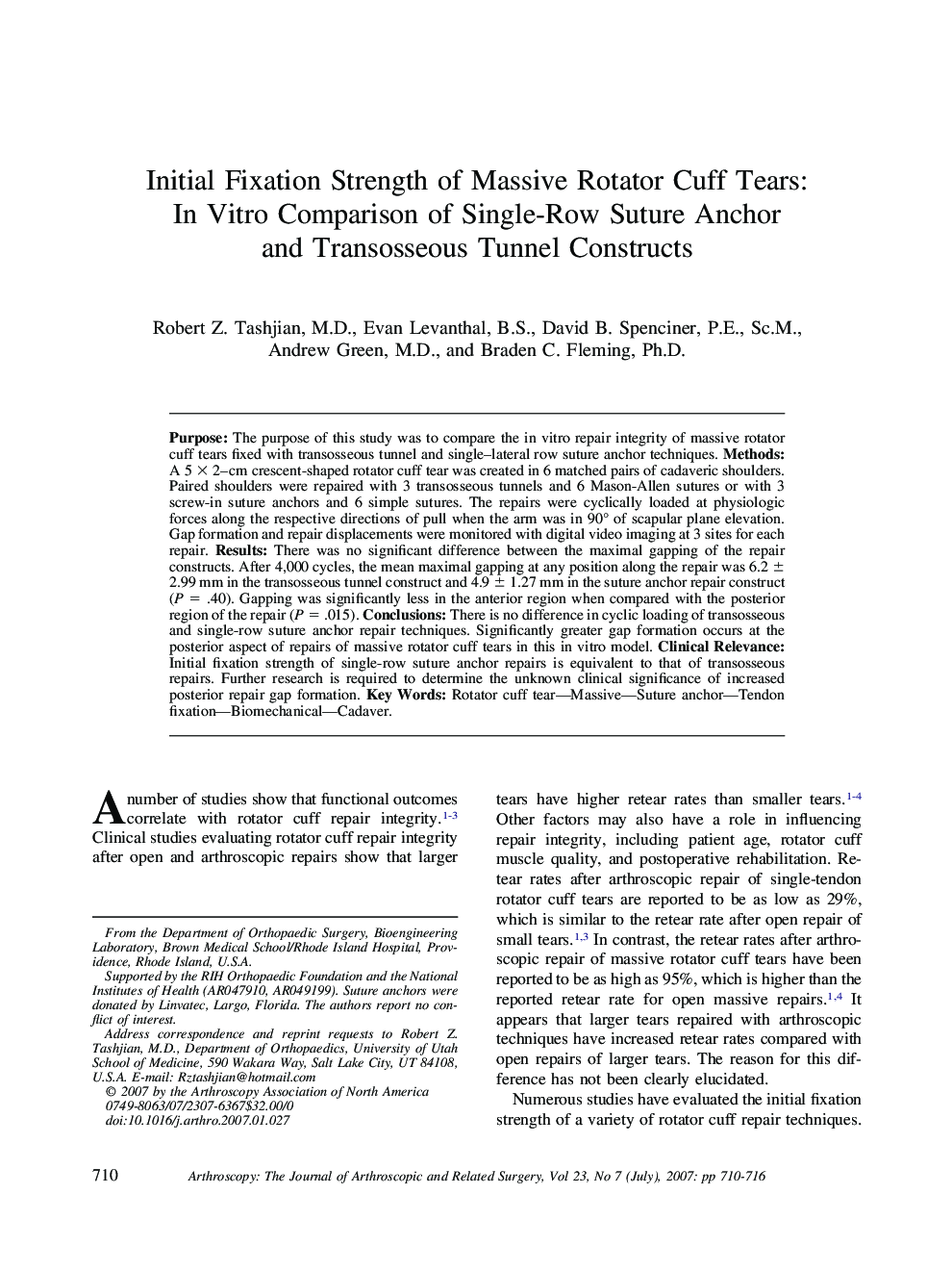| Article ID | Journal | Published Year | Pages | File Type |
|---|---|---|---|---|
| 4046699 | Arthroscopy: The Journal of Arthroscopic & Related Surgery | 2007 | 7 Pages |
Purpose: The purpose of this study was to compare the in vitro repair integrity of massive rotator cuff tears fixed with transosseous tunnel and single–lateral row suture anchor techniques. Methods: A 5 × 2–cm crescent-shaped rotator cuff tear was created in 6 matched pairs of cadaveric shoulders. Paired shoulders were repaired with 3 transosseous tunnels and 6 Mason-Allen sutures or with 3 screw-in suture anchors and 6 simple sutures. The repairs were cyclically loaded at physiologic forces along the respective directions of pull when the arm was in 90° of scapular plane elevation. Gap formation and repair displacements were monitored with digital video imaging at 3 sites for each repair. Results: There was no significant difference between the maximal gapping of the repair constructs. After 4,000 cycles, the mean maximal gapping at any position along the repair was 6.2 ± 2.99 mm in the transosseous tunnel construct and 4.9 ± 1.27 mm in the suture anchor repair construct (P = .40). Gapping was significantly less in the anterior region when compared with the posterior region of the repair (P = .015).Conclusions: There is no difference in cyclic loading of transosseous and single-row suture anchor repair techniques. Significantly greater gap formation occurs at the posterior aspect of repairs of massive rotator cuff tears in this in vitro model. Clinical Relevance: Initial fixation strength of single-row suture anchor repairs is equivalent to that of transosseous repairs. Further research is required to determine the unknown clinical significance of increased posterior repair gap formation.
